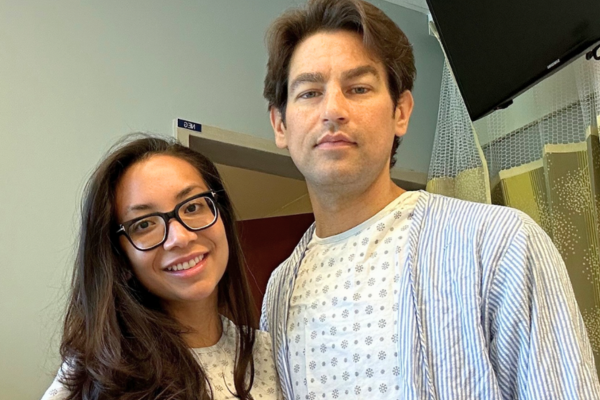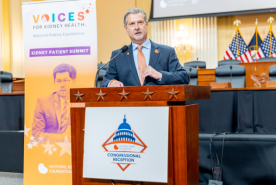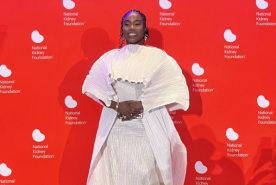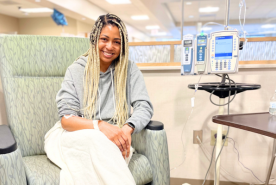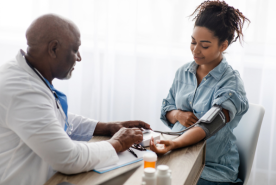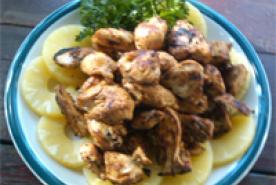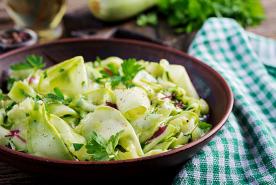August 05, 2024
Fitness instructor, influencer, and businesswoman Tatiana Zambardino knows how to work hard and face challenges head-on. So, when her then fiancé, now husband, Michael, was diagnosed with kidney failure, she didn't hesitate to step up, first as a care partner and then as his living kidney donor.
Confronting Kidney Failure
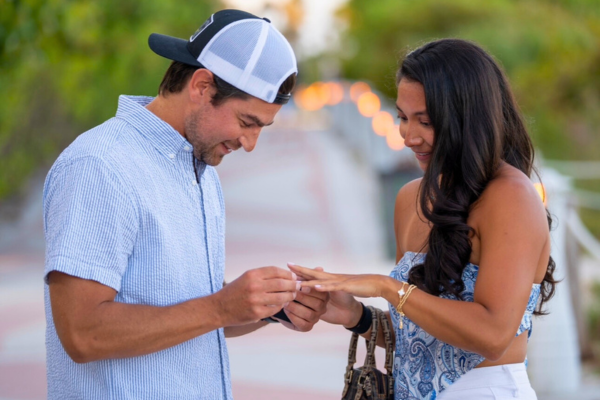
Michael learned his eGFR was declining during a routine health check-in in 2016.
"He was on mesalamine, a medication for Crohn's disease. We didn't understand it at the time, but they tested him regularly because kidney damage is a side effect. He stopped taking it because it didn't work," Tatiana said. "His eGFR also declined but his doctor wasn't worried about his kidneys since he stopped the medication. We assumed everything was fine."
According to a study of existing literature on mesalamine and kidney disease, the medication can, in rare occurrences, cause chronic kidney issues in people treated for Crohn's disease. In most cases, people's eGFR recovers after they stop using the drug.1
"Michael's doctor found a new medication that worked and we continued living our lives. We got engaged on May 14th, 2022, and moved to a new state a year later," Tatiana said. "Once we settled in, my parents came to visit."
After Tatiana’s parents went home, he began to feel sick.
"We thought my parents accidentally brought COVID from their travels, but Michael’s illness continued," said Tatiana. "He slept more than usual and had no energy."
In July, Michael went to the doctor to find out why.
"Blood work confirmed Michael had kidney failure. He got a dialysis fistula the next day and started dialysis soon after. At first, Michael bounced back. Three days a week at in-center dialysis was hard but he was still himself and able to work," said Tatiana. "Then his energy began to fade. By January 2024, he was sleeping his life away."
Are you at risk of kidney disease? Take our one-minute quiz to find out.
Finding a Living Kidney Donor
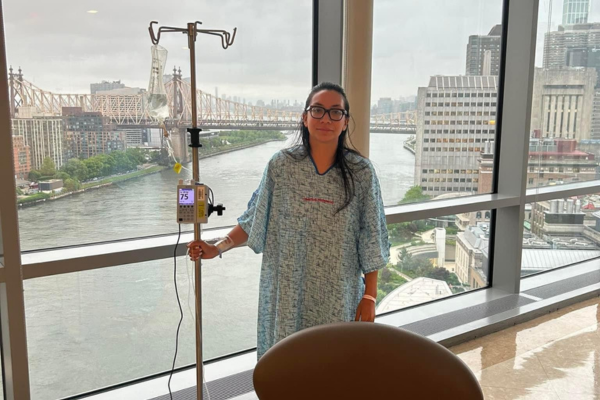
Tatiana volunteered to donate a kidney to Michael when they learned he was in kidney failure.
"He was grateful but didn't want to ask that of me. He also felt the transplant would be easier if we weren't both recovering from surgery at the same time," said Tatiana. "He had several potential donors who wanted the honor of donating, like my brother, who ended up being a match. Their surgery was scheduled for May 29th, 2023, ten days after our wedding."
However, some issues arose that resulted in that surgery getting canceled. In November, another potential donor was disqualified. Tatiana knew what she had to do.
"Michael and I had an emotional conversation. I insisted I was happy to give my kidney to him. Everyone else had fallen through and I wanted to do it," Tatiana said. "He agreed and I began the living kidney donor evaluation. Six months later I was declared fit to donate and a match."
The transplant was scheduled, but the Zambardinos learned their insurance company would not cover it at their chosen hospital.
"They denied us days before our surgery date," said Tatiana. "It was stressful. Thankfully, our insurance approved a nearby hospital which scheduled us just one week later."
Tatiana and Michael's surgery took place on May 14th, 2024, the anniversary of Michael's proposal. It was a success!
"My doctor warned me that I would experience shoulder pain from the air they pumped into my abdomen for the surgery. It was very painful because I'm a smaller statue, but each day got easier," Tatiana said. "By the third day, I was on my way to recovery. Now I'm back to work and feeling like I did a pre-transplant."
Michael is also thriving and enjoying life with his new kidney.
"All of the little things, like going to my birthday dinner, that we took for granted are so exciting to us now. I feel so blessed and happy," Tatiana said. "We are almost back to what life was before Michael's kidney failure diagnosis."
Are you interested in giving the gift of life? NKF is here to help you learn everything you need about donating a kidney. Take our free online course about living donation today.
Sharing Their Story
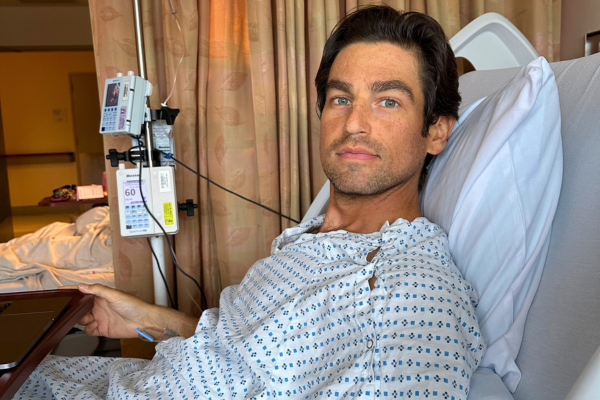
Tatiana and Michael held off on sharing their story with their broader community for a long time.
"I didn't share it because I didn't want anything to affect my fitness business. But by January 2024, Michael's health had decreased significantly. I was feeling alone and wanted to get it off my chest," Tatiana said. "I shared our story on social media and created a fundraiser to raise money for bills associated with his care. Our friends supported the fundraiser by donating and sharing it with more people. My fitness community also rallied behind me, sharing advice and cheering us on."
This support bolstered Tatiana and Michael during the most challenging part of their journey. They believe it's the reason they reached the finish line.
"The response was so positive that I decided to share that I was donating a kidney to my husband. I didn't want to jinx it so I waited until the day before our surgery. My followers’ minds were blown," said Tatiana. "Since then I've had many more people reach out to me for advice and to share their own stories."
Tatiana decided to continue sharing her story and raising awareness about the power of living kidney donation.
"There are not enough kidneys to meet the need. If you feel called to become a living kidney donor, I can't recommend it enough. If not, you can sign up through the DMV to be a deceased organ donor," said Tatiana. "If donating isn't for you, educating others, advocating for better kidney disease policies, and fundraising are other amazing ways to show your support and to make a difference."
Want to help NKF provide more free resources, support, and hope for patients, loved ones, and healthcare heroes? Create your own fundraiser or donate today.
Source
1The Association of Mesalamine With Kidney Disease Adiga, Avinash et al. Advances in Chronic Kidney Disease, Volume 27, Issue 1, 72 - 76
